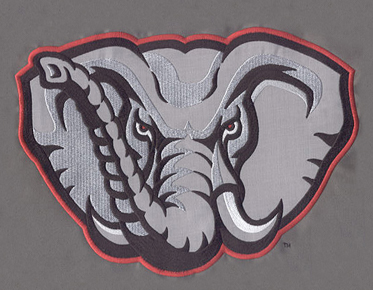Ergonomic Embroidery: Crafting Wearable Art with Comfort in Mind
Embroidery is not just about creating visually appealing designs; it's also about ensuring that the final product is comfortable and enjoyable to wear. In the realm of wearable art, the principles of ergonomics play a crucial role in enhancing the overall experience for the wearer. In this blog, we'll delve into the world of ergonomic embroidery, exploring the considerations and techniques that go into designing comfortable and stylish wearable art.
Understanding Ergonomic
Embroidery
1. Fabric Selection
The foundation of ergonomic embroidery lies in
choosing the right fabric for the wearable art. Consider the texture, weight,
and breathability of the fabric. Lightweight and breathable fabrics like cotton
or blends are often preferred, ensuring comfort even during prolonged wear.
2. Design Placement
Strategic design placement is key to achieving
ergonomic excellence. Avoid placing heavy or dense embroidery in areas that can
cause discomfort, such as underarms or along seams. Instead, focus on central
areas like the chest or back for larger designs to distribute the weight
evenly.
3. Stitch Density and Type
Optimal stitch density is crucial for both the
aesthetics and comfort of embroidered pieces. Dense stitching can lead to
stiffness, making the fabric less pliable. Choose stitch types that contribute
to flexibility, especially for areas that require movement, such as elbows or
knees.
4. Seam Integration
Coordinate with garment construction to seamlessly integrate embroidery into the design. Aligning embroidery with seams ensures that it moves naturally with the garment, preventing any restrictions in movement. This integration is particularly vital for garments like jackets, where ergonomic considerations are paramount.
Considerations for Different
Wearable Art
1. Embroidered Apparel
For clothing items, prioritize comfort by
selecting loose-fitting styles and integrating embroidery in areas that won't
impede movement. Focus on breathable fabrics like linen or jersey for casual
wear, and ensure that the embroidery doesn't compromise the garment's drape.
2. Embroidered Accessories
Accessories, such as hats or bags, require a
different approach. Opt for lightweight materials to avoid adding unnecessary
weight. Pay attention to the positioning of embroidery on accessories to maintain
balance and prevent discomfort during use.
3. Embroidered Footwear
Footwear presents unique challenges in ergonomic design. Consider the flexibility and movement of the material, particularly for embroidered sneakers or boots. Prioritize areas that won't rub against the skin, and choose breathable fabrics to enhance overall comfort.
Techniques for Ergonomic
Embroidery
1. Test Wearability During Design
Before finalizing a design, create a prototype
and test its wearability. Evaluate how the embroidery feels against the skin,
ensuring that it doesn't cause irritation or discomfort during movement.
2. Utilize 3D Embroidery Techniques
Incorporate three-dimensional embroidery
techniques to add depth without compromising flexibility.
3. Optimize Thread Choices
The type of thread used significantly impacts
the feel of embroidered garments. Choose threads that are soft and pliable,
minimizing stiffness. Experiment with different thread materials and textures
to find the right balance between comfort and aesthetics.
4. Seamless Integration of Designs
Designs that seamlessly blend with the garment's contours contribute to ergonomic excellence. Consider the natural flow of the body and integrate embroidery in ways that complement the garment's shape, preventing any awkward or uncomfortable protrusions.
Maintaining Durability and
Comfort
1. Reinforce High-Stress Areas
Identify high-stress areas, such as joints or
points of movement, and reinforce them with additional stitching. This ensures
that the embroidered piece remains durable and retains its shape even with
regular wear.
2. Use Stabilizers Wisely
Stabilizers are essential in embroidery, providing support during the stitching process. However, they should be chosen and used judiciously to avoid stiffness. Experiment with different stabilizers and application techniques to find the right balance.
Conclusion: Crafting Wearable
Comfort
Ergonomic embroidery goes beyond aesthetics; it's about crafting
wearable art that harmonizes with the human form. By carefully considering
fabric choices, design placement, and stitching techniques, embroiderers can
create pieces that not only look stunning but also provide a comfortable and
enjoyable experience for the wearer. Whether it's apparel, accessories, or
footwear, integrating ergonomic principles into embroidery ensures that the
final product is a true masterpiece that feels as good as it looks. So, embrace
the art of ergonomic embroidery, where comfort and style coalesce, creating
wearable pieces that leave a lasting impression.



